Sponsored by Merit SensorReviewed by Louis CastelJul 28 2025
Accurate pressure and flow measurements are essential in medical devices to ensure diagnostic precision and therapeutic safety. Transducers (sensors that convert pressure into electrical signals) are critical in these systems, particularly in applications involving liquids and gases.
Utilizing sophisticated MEMS technology, Merit Sensor Systems offers high-performance, medical-grade transducers designed for a wide range of applications, from laboratory settings to hospital environments.
Pressure and Flow: Taking the Pulse Through Medical Applications
Medical equipment is frequently used to monitor pressure within both fluid delivery systems and the human body. By applying Bernoulli’s principle, where pressure reductions across a restriction are proportional to the square of the flow rate, in-line pressure measurements can be used to approximate flow, assuming system geometry is known.
Devices such as infusion pumps can detect pressure to identify blockages, while ventilators can determine airflow based on pressure changes.
Merit Sensor’s transducers measure pressure in gases and liquids across a broad range of applications, including digital inflation devices, depth/crossflow filtration, gas detection, bioreactor monitoring, and peristaltic pumps.1,2
To maintain measurement accuracy, the transducers feature a high-frequency response and analog signal output, enabling detailed signal processing. This ensures highly precise capture of even subtle pressure fluctuations, including pulsating displacements.
MEMS Technology for Sensing: The Heart of Effective Metrology
Merit Sensor’s medical-grade transducers employ silicon-based MEMS (micro-electro-mechanical systems) technology. Each sensor incorporates a miniature diaphragm with a Wheatstone bridge that flexes under pressure, converting mechanical force into an electrical signal.3
Merit Sensor’s medical-grade transducers employ silicon-based MEMS (micro-electro-mechanical systems) technology. Each sensor incorporates a miniature diaphragm with a Wheatstone bridge that flexes under pressure, converting mechanical force into an electrical signal.4
A key feature of Merit Sensor’s transducers is their wide pressure range, from -15 psi (full vacuum) to over 1000 psi, making them suitable for various medical applications, including blood pressure monitoring and high-pressure injection systems. Despite their compact size, these transducers are mechanically robust, with a burst tolerance of up to 1000 psi, enabling safe operation even in demanding conditions.
Purpose-Built: Medical-Grade Durability and Compatibility
Sterilization and biocompatibility are essential in medical design. Merit Sensor’s transducers incorporate carefully selected wetted materials—including silicon sensing elements—that are inert to common fluids such as blood, saline, and medications. Additionally, many models include silicone gel barriers that isolate internal components, enhancing fluid resistance and safety.3
These transducers are suitable for both single-use and reusable devices due to their compatibility with standard sterilization methods, including ethylene oxide (ETO) gas and gamma irradiation. Whether embedded in a bedside monitor or integrated into a sterile fluid path, Merit Sensor transducers meet strict cleanliness and safety standards.5
Our Portfolio: Trusted Solutions for Medical Pressure Sensing
AP Series – Compensated Pressure Sensor Assemblies
Merit’s AP Series is a compact, passively compensated sensor line widely used in medical and pharmaceutical devices. Offering customizable packaging, these assemblies provide accurate analog millivolt output with low offset error—ideal for external signal amplification.
Designed for digital inflation devices, AP Series sensors are built with sterilizable materials, extending their suitability to a wide range of low- to medium-pressure medical applications.3
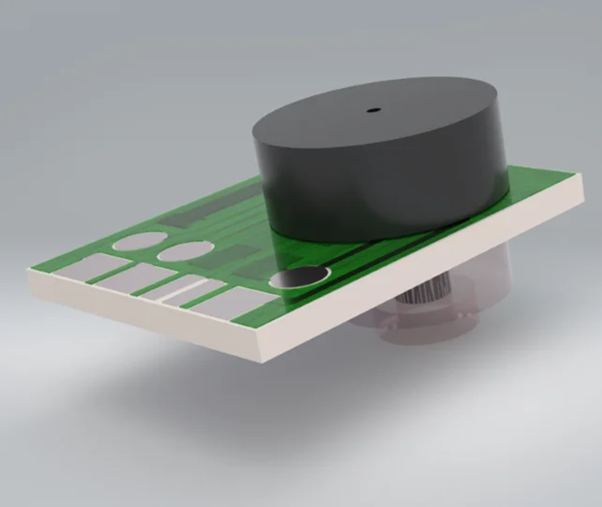
Image Credit: Merit Sensor
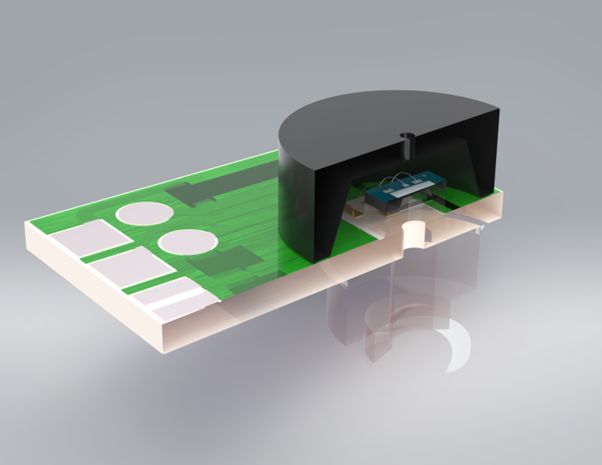
Image Credit: Merit Sensor
Amplified Pressure Transducer Assemblies
For plug-and-play integration, the product line includes transducers with onboard electronics that amplify and condition the signal. These assemblies use the same core sensing element as the AP Series while adding real-time compensation for pressure and signal linearity.
Luer lock connections enable simple fluid interfacing, while a standard 3-pin Molex or optional RJ11 connector ensures compatibility with hospital-grade systems. Their durable construction and sterilization compatibility support use in diagnostic and analysis equipment.6
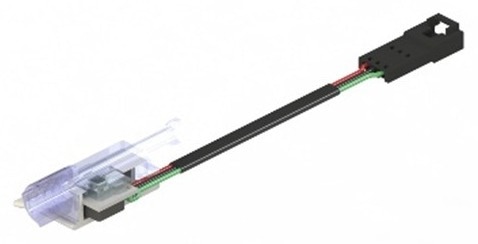
Image Credit: Merit Sensor
Meritrans® Disposable Blood Pressure Transducers and Flush Devices
The Meritrans® Blood Pressure Transducers product line, including the Meritrans® DTXPlus, consists of disposable, single-use pressure transducers engineered for arterial blood sampling. Common in surgical and critical care environments, these devices convert blood pressure within the body into a real-time signal viewable on bedside monitors.6,7
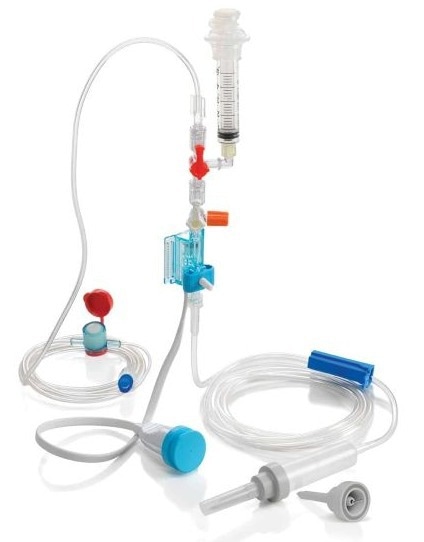
Image Credit: Merit Sensor
These sterile transducers connect via Luer locks and include integrated flush devices for line maintenance. A manual flush clears blood, while a continuous low-rate flush (e.g., 3 mL/hour) keeps the line open. For safety, overpressure valves automatically vent excess pressure back into the IV bag, protecting both the device and the patient from potential harm.8
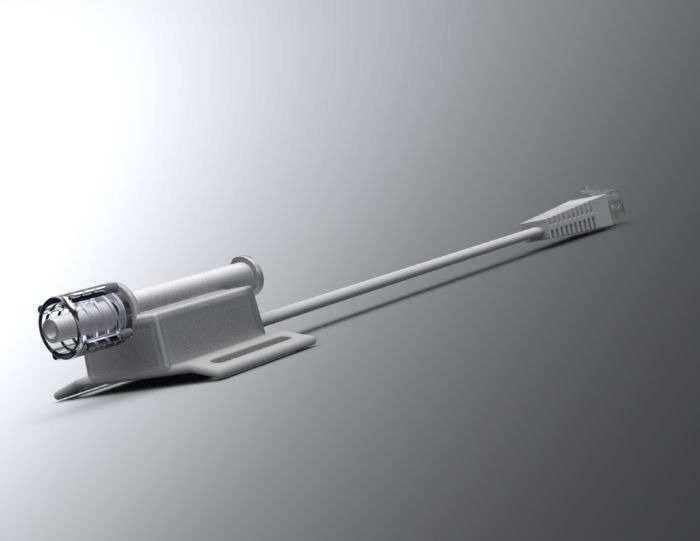
Image Credit: Merit Sensor
Core Advantages of Merit Sensor Transducers
- Precision and Stability: MEMS elements provide accurate readings with low temperature drift, ensuring long-term dependability without the need for complex compensation electronics.
- Broad Pressure Range: From vacuum conditions to 1000 psi, the same sensor platform supports a wide range of medical applications, including suction systems and high-pressure fluid delivery.
- Mechanical Durability: High burst tolerance ensures operational safety and robustness, even in disposable formats.
- Sterilization Compatibility: ETO- and gamma-compatible materials support safe reuse or single-use deployment in sterile environments.
- Versatile Signal Output: Options include uncompensated millivolt signals for cost-sensitive integration or fully conditioned analog outputs for rapid deployment.
- In-House Customization: A vertically integrated wafer fab enables tailored performance and packaging to meet specific medical design requirements.
Conclusion: Trustworthy Data in Life-Critical Applications
Pressure transducers are essential in modern medical technology. They convert critical physical parameters into actionable digital signals, from tracking blood pressure to monitoring inflatable devices.
Merit Sensor transducers provide medical professionals with precise, dependable data. By combining robust design, sterilization compatibility, and customizable performance, these components meet the demanding requirements of the healthcare sector.
Merit Sensor’s solutions range from OEM elements to fully disposable transducers, offering broad utility across diagnostic, monitoring, and therapeutic systems.
Whether for manufacturers or clinicians, these sensors provide a reliable foundation for improving patient care through accurate measurement.
References and Further Reading
- Merit Medical. (2025). Inflation Devices. (online) Available at: https://www.merit.com/solutions/inflation-devices/ (Accessed 21 Jul. 2025).
- Merit Medical. (2022). Meritrans® Pressure Transducers. (online) Available at: https://www.merit.com/product/meritrans-pressure-transducers/ (Accessed 21 Jul. 2025).
- Merit Sensor AP Series. https://meritsensor.com/assets/documents/pdf/AP-series.pdf.
- Merit Sensor. (2025). Low/Medium Pressure Sensor Package - AP Series. (online) Available at: https://meritsensor.com/products/AP-Series/ (Accessed 21 Jul. 2025).
- Riley, C. (2024). Merit Sensor AP Series in Pharmaceutical and Medical Applications - Merit Sensor. (online) Merit Sensor. Available at: https://meritsensor.com/merit-sensor-ap-series-in-pharmaceutical-and-medical-applications/ (Accessed 21 Jul. 2025).
- Merit Sensors. Merit OEM Transducers.
- Merit Medical. (2024). Meritrans DTXPlus Disposable Transducers. (online) Available at: https://www.merit.com/product/meritrans-dtxplus-disposable-transducers/ (Accessed 21 Jul. 2025).
- Merit Medical. Monitoring Life™ Meritrans DTXPlus™ Disposable Pressure Transducer Sets Safedraw™ Blood Sampling System. Available at: https://cloud.merit.com/catalog/IFUs/403643003_001.pdf (Accessed 21 Jul. 2025).

This information has been sourced, reviewed, and adapted from materials provided by Merit Sensor.
For more information on this source, please visit Merit Sensor.